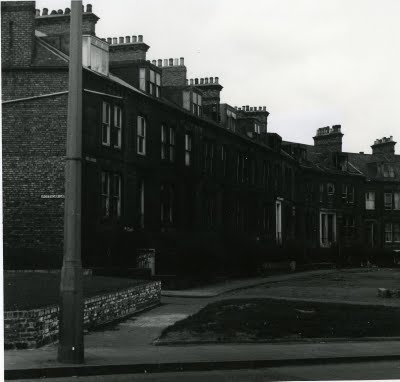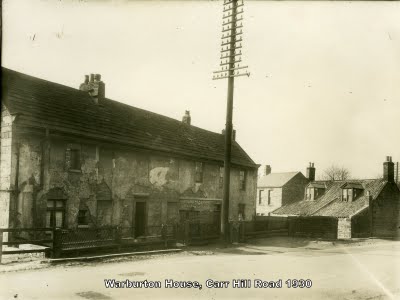Central Gateshead to Low Fell

Vestiges of Old Newcastle and Gateshead by J.R. Boyle FSA
Low Felly Gaieshead'On-Tyne, June^ 1890.
Vestiges of Old Newcastle and Gateshead by J.R. Boyle FSA 1890
known as Jackson Chare, and at a still earlier period as Collier Chare ; although we have Mr. Longstaflfe's authority for saying that the latter name was at one time ascribed to the north part of West Street. We have now reached the sites of the ** upper pant '* and the pinfold. Here we must bring our survey of the High Street to a close. The road beyond is an attractive one to an antiquary
who knows its history and traditions. Almost every step suggests an interesting association.
There is the now almost forgotten Busy Burn, where, in 1646, a " poore man,*' who had died of the plague, was buried by the parish at an expense of 1s.

Left click to enlarge this pic of The Crescent/Potticar Lane
A little further is Potticar Lane, which I have seen described in a
deed of 1650 as " Apothecary's Lonnin, alias Cut-throat Lonnin." Beyond this is Camer Dykes [where Springfield Honda showrooms are now] (not Cramer^ as now erroneously spelled), of which William Gategang died seized in 1430, and where, in 1441, GeoflEry Middleton, then sheriflf of Durham, had licence from the bishop to obtain ** sea-coal ** during a
period of ten years. Next, a little on the left, is Deckham Hall, a deserted modern house, which occupies the site of an old mansion built by Thomas Dackham, who died in 1615, and who, in a petition to the bishop of Durham, praying for the return of an overcharge of rent, says, ** I have sent you, in
remembrance of my duetye, two houands cheeses by this bearrer.'* Close by are Carr's Hill, with its old stone-roofed houses,

Left click to enlarge
and Warburton Place, where a pottery was established far into last century. Beyond this point the road stretches across Gateshead Fell, once the central resort of all the muggers, fawsand itinerant tinkers of the counties of Durham and Northumberland. Surtees describes it as " formerly a wide, spongy, dark moor." An act was passed for its enclosure in 1809, and three years afterwards it was divided and allotted.
About two miles from Tyne Bridge is the village of Sheriff Hill, where for centuries the justices of assize, coming northwards, were met by the sheriffs of Northumberland. Hence its name. The " Cannon" ale-house was " the place of meeting/' where the sheriff and his retinue, numerous and splendidly mounted and attired, refreshed themselves till the judges arrived. Almost
opposite is the Sheriff Hill Pottery, where earthenware has been made for more than a century, though for how much longer I cannot say. About half a mile further, and a little to the east of the road, is the Beacon Hill, the highest point in the parish, 557 feet above sea level: Thereon, in times of danger and alarm, the beacon fires were lit. In 1645 the parish paid 18s. ** for a new pann
and crouke to the Beacon."